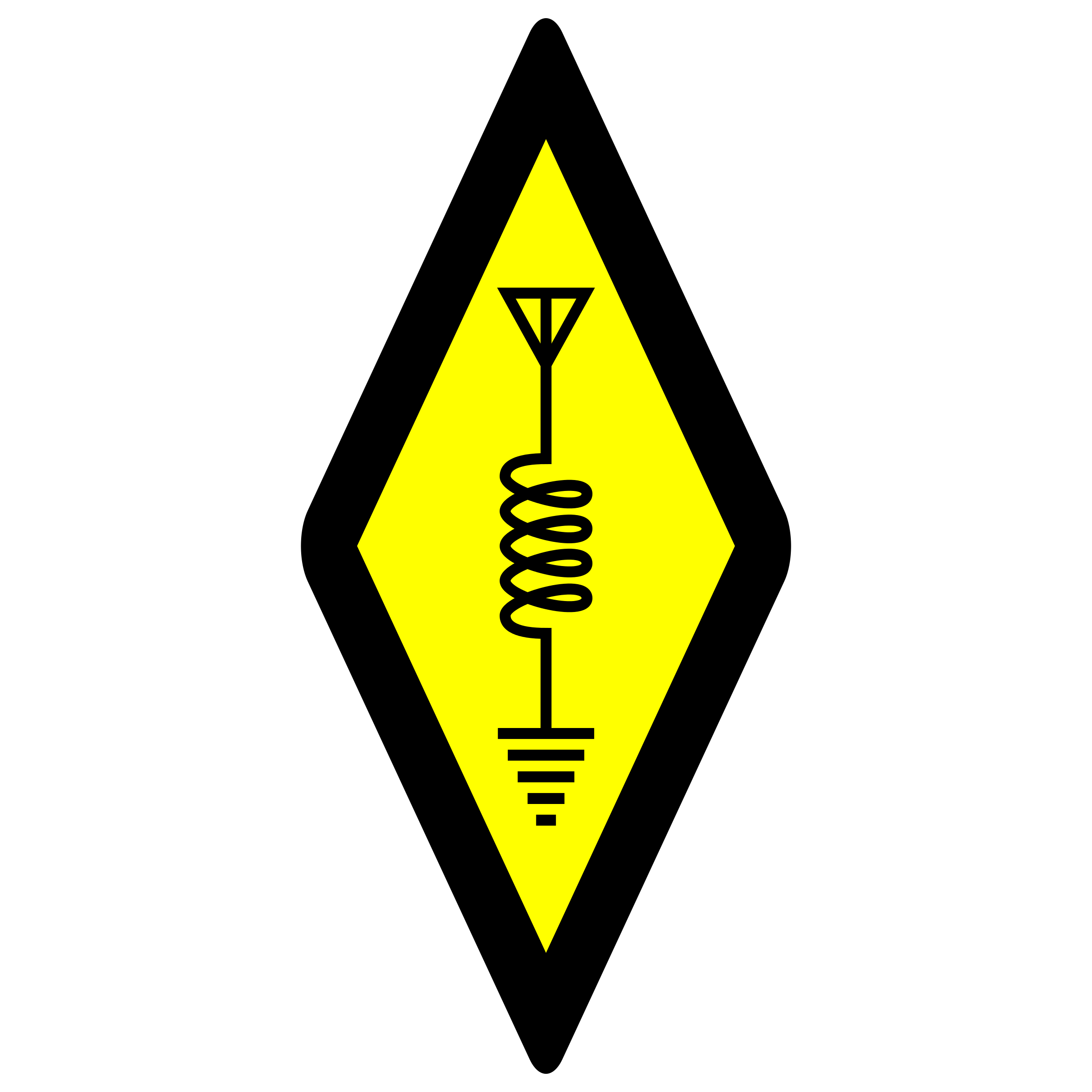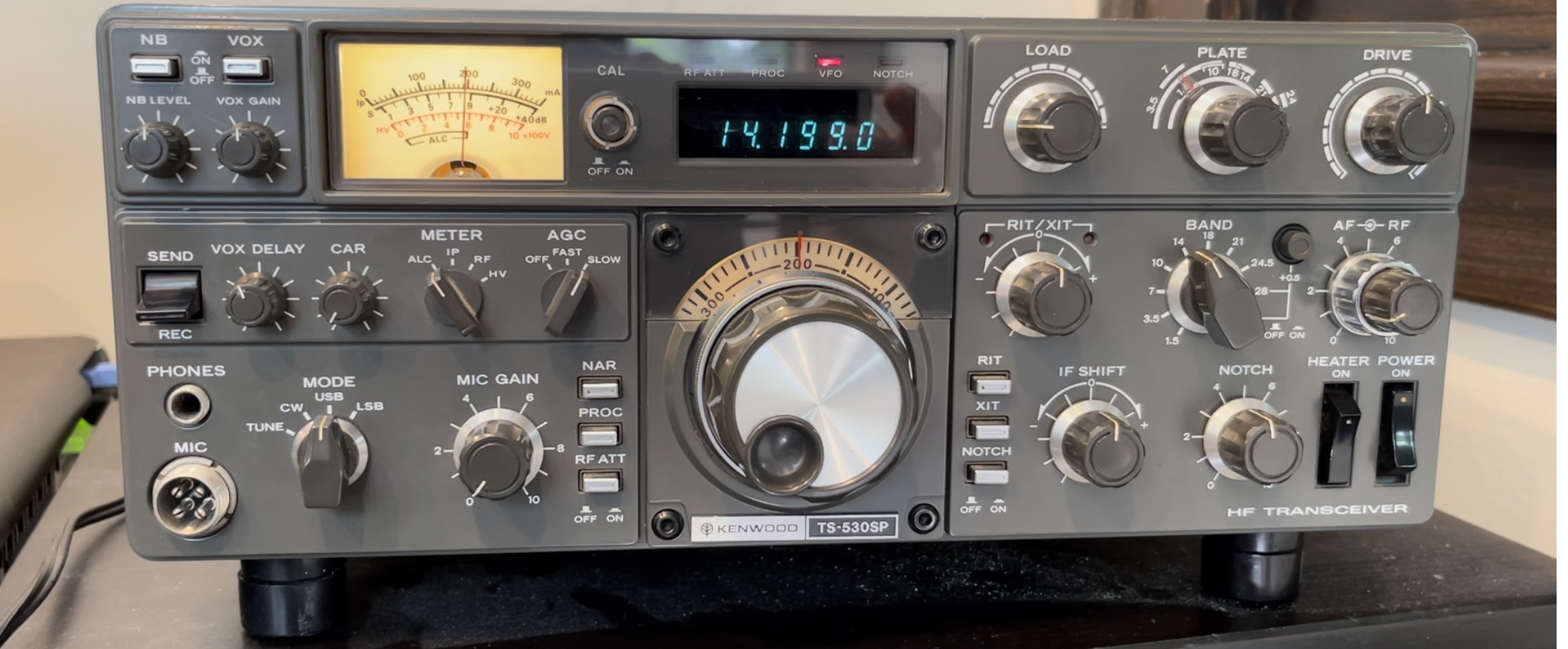
Kenwood TS-530SP
Back in the late 90s, I purchased a Kenwood TS-530SP from a neighbor who got me into the hobby. Ken, N1QQV, offered to sell me the radio after he upgraded to a new HF rig. Even though at the time I held a technician class license, I knew that one day I would upgrade and be able to use the rig. Since I didn’t have the funds to purchase a new radio at the time, this was a great deal. I knew he took care of it and it was in perfect working condition.
I started to learn CW in anticipation of taking the general exam, but college and other activities took priority. At the time, I used the rig for receiving and dialing around the bands. At one point I remember listening to a shuttle launch rebroadcast on HF.
I have moved a few times since then, and each time I moved, the Kenwood was among the items packed away that I didn’t use. Shortly after my first move I held onto the radio for sentimental reasons, as N1QQV became a silent key.
Kenwood Hybrids
The TS-530SP is a hybrid rig. It combines solid state components with integrated circuits for the receiver and most of the transmitter, with the exception of the driver and finals, which are tubes. At the time when this radio was manufactured, transistor finals were not cost effective. Kenwood chose some very common tubes for the driver and finals, which is most likely one of the main reasons these rigs are still on the air and continue to be serviced by hobbyists.
Another reason these hybrid rigs are still on the air and enjoyed by many hobbyists is their design and build are modular. Each major circuit in the radio is on a separate PCB for easy diagnosis and repair. Today’s radios are much more difficult to repair due to surface mount parts and highly customized ICs and other parts. Manufacturing costs of custom ICs, displays, switches, fans, and other components have decreased over the decades since these hybrid rigs were manufactured. Most components in these hybrid rigs were generic and found in other electronic devices. Today’s rigs have fewer parts that you’ll be able to find in other electronic devices or decades later.
Inspection
When I recently got back into the hobby, I unpacked the radio and see if it still worked. Before powering it up, I replaced the HV capacitors and visually checked over the various sections of the radio for anything that might look suspect and to ensure nothing crawled in there. The radio was very clean.
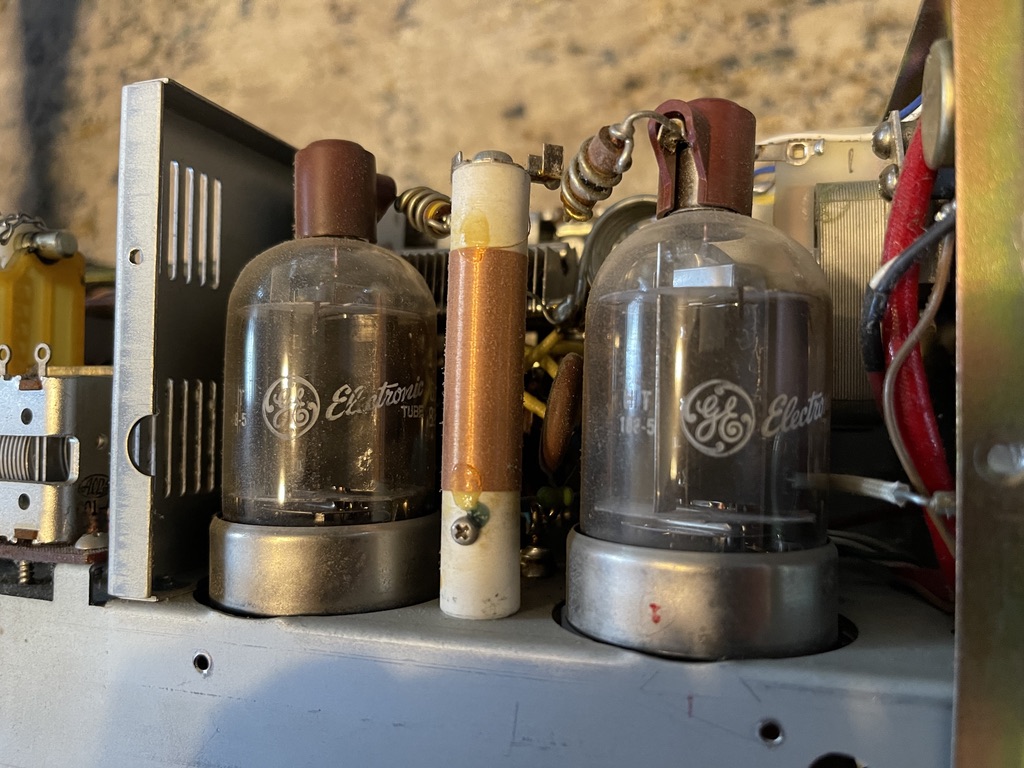
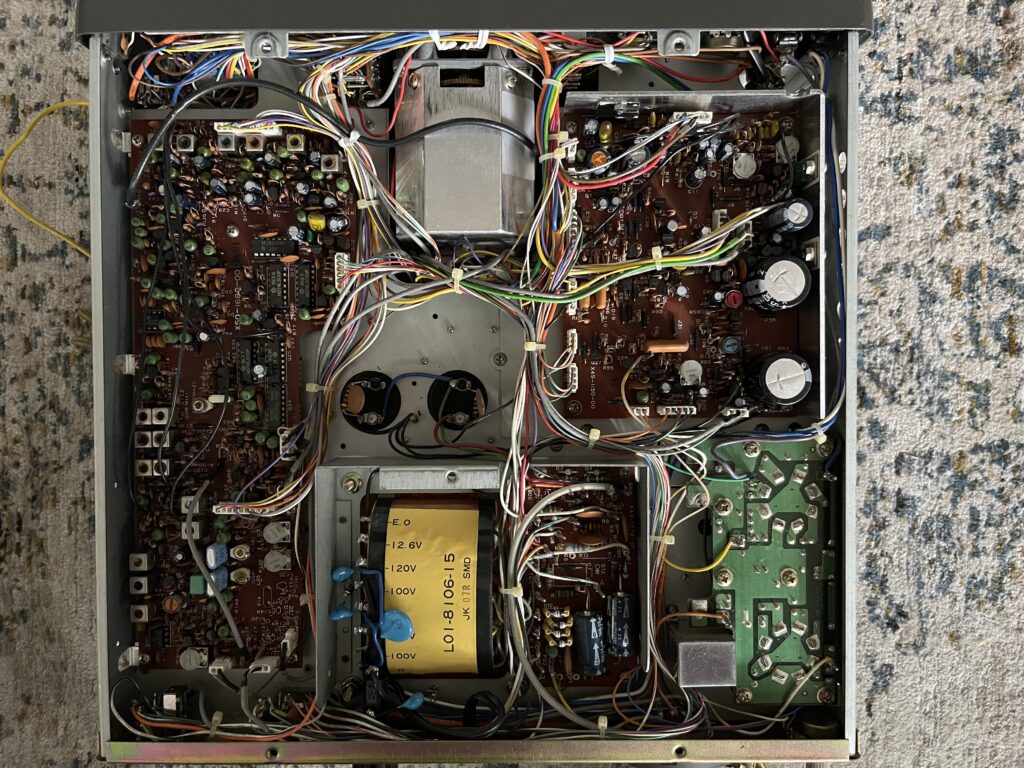
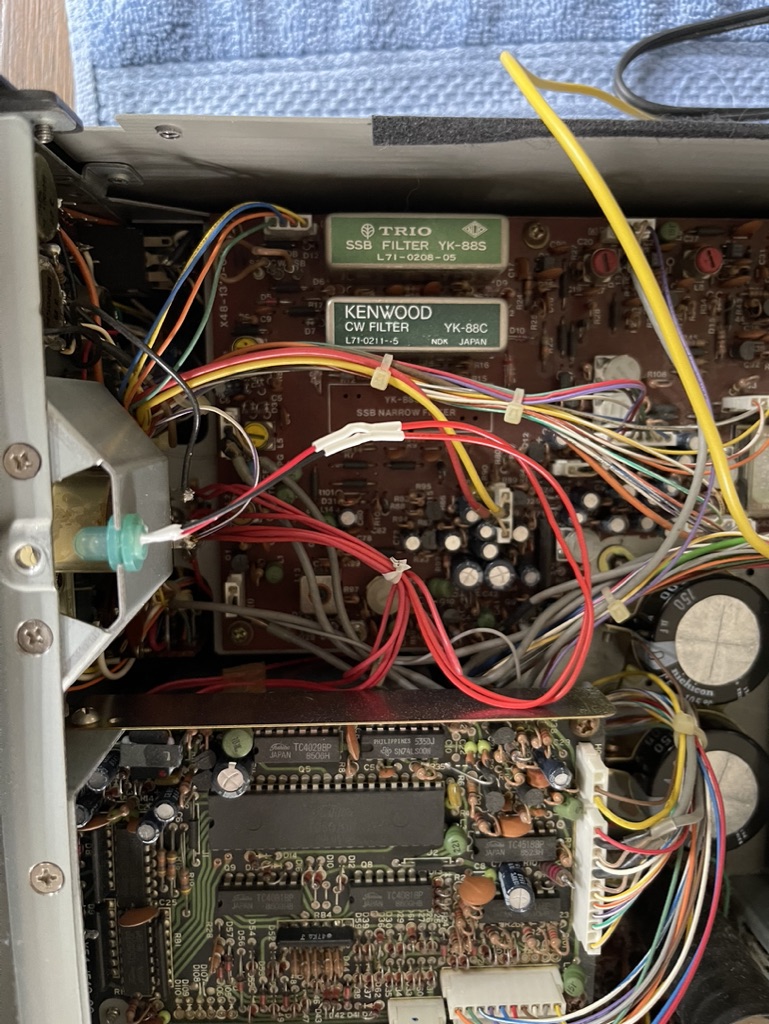
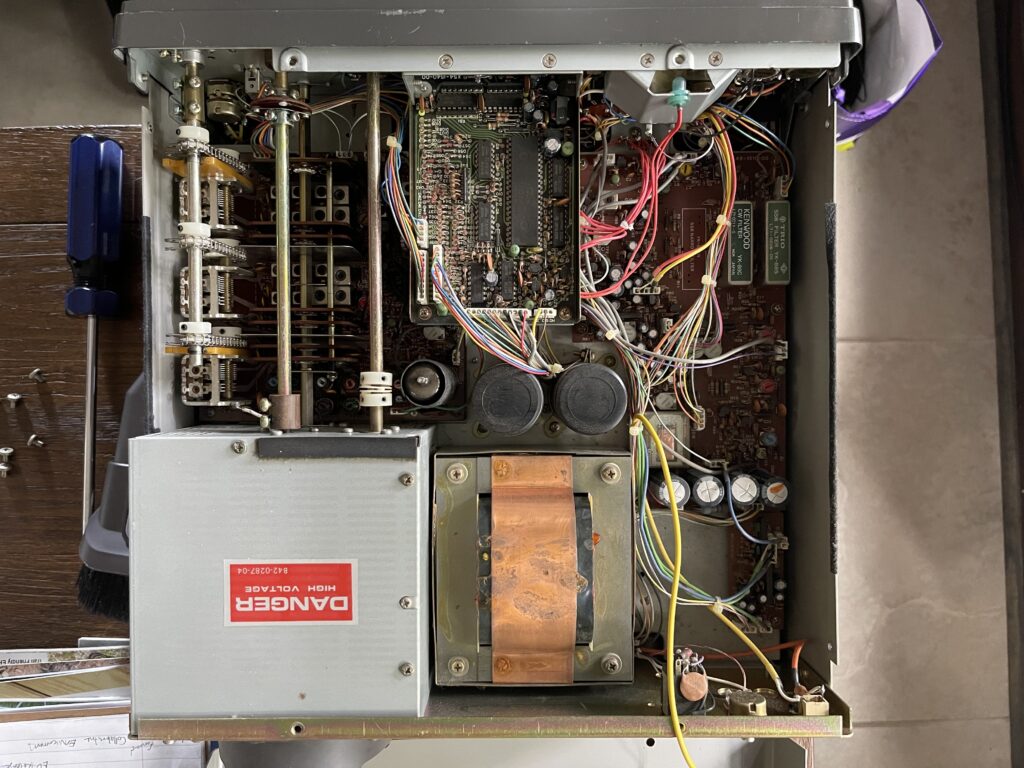
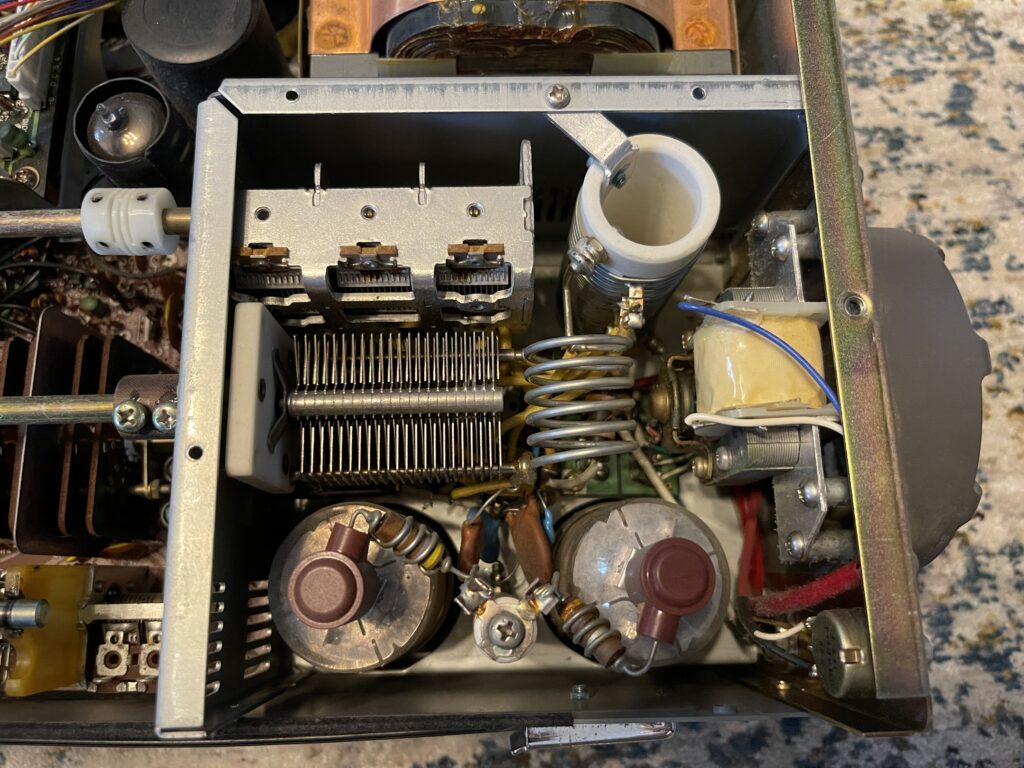
I inspected the band switch, drive control, load control and plate control. All appeared to mechanically work. None of the nylon couplers were broken yet, although I did notice stress cracks near the screws on almost all of them.
Smoke Test
I powered up the radio and no smoke! It received well, the band switch needed some cleaning, as well as some of the other push buttons – all minor items to address.
I replaced the meter light since it had burned out. I purchased the meter light, band switch couplers, HV caps, and other parts from K4EAA. His wife still runs the parts business after Ken became a silent key.
I had no idea if the driver and final tubes were still good. I visually inspected the final cage and driver tube, nothing visually appeared burned or cracked.
Tuning Up
I turned on the heaters and verified the fan was working in the back. I saw the lights dim a bit on the radio and heard a few clicks as the filaments warmed up. No smoke, no odor, all good signs.
I read the tune up procedure in the owners manual and studied it in detail. I gave it a go. I connected a 50-ohm dummy load to the RF output, checked the bias current, it looked good, 60ma. I set everything where it should be initially, and flipped the send switch. The meter moved, I peaked the drive control. As I started to dip the plate, I noticed no dip. The meter was fairly level as I turned the plate knob to either side of the range for the chosen band. I decided to stop.
During tuning I noticed the receive audio dropped and the signal meter dropped when switching back to receive from the send position. I suspected one of the relays at first, but then gave the band switch a turn in both directions and receive came back. I noted that the band switch needed to be cleaned.
The symptom I observed (no plate current dip) could point to many things needing to be checked. I read a bit on the Kenwood hybrid group to get an idea of where to start and what to look for.
Replacement Tubes
I knew that at some point I would need to replace the driver and final tubes, so I began a search for replacements. Since these tubes have not been manufactured in quite awhile, there is no option to buy “new”. There are NOS tubes everywhere, and this is the best option. Any 6146B “equivalent” tubes made today are not of sufficient quality for RF output in these rigs. There have been several discussions on the Kenwood hybrid group regarding the 6146 tubes, one article here and another here have been referenced.
I decided to pull the trigger and purchase a set of replacements. All three tubes with shipping were less than $200, tested and matched by the vendor. They are Sylvania 6146Bs, and the 12BY7A driver tube.
Second Test
When the replacement tubes arrived, I tried the tune procedure one more time before replacing the driver and finals. Complete success, no issues this time! I suspect the band switch is the culprit, and needs a cleaning.
I tested the desk microphone and noticed no audio output. After cleaning the contacts on the mic cable (both ends) with DeoxIT D5, it came back to life.
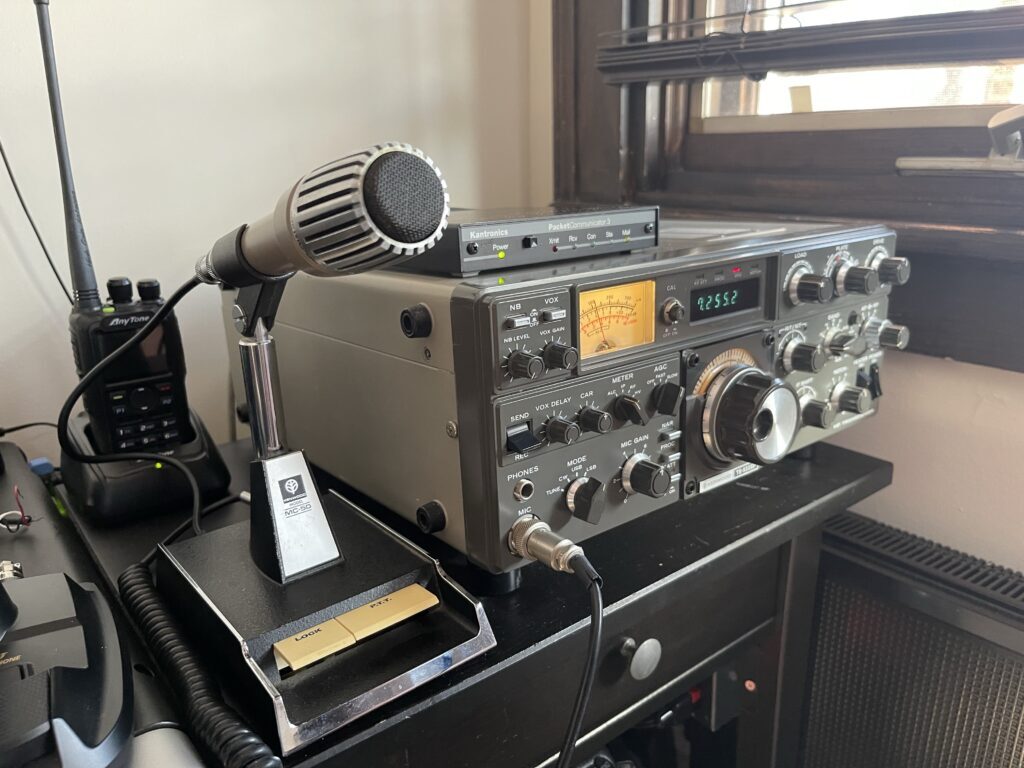
I had a great test QSO with KD2YCK who lives close by, and noted about 100 watts peak output using an external tuner on 20 meters, phone. The radio needs an adjustment as the frequency on the display is off by +100 hz. I left the band switch exactly where it is and to remember to tune 0.1 lower on the display.
Kenwood Hybrid Group and HF Net
There is a Kenwood hybrid group on groups.io and an HF net on weekends.
Final Thoughts
It was exciting having a phone QSO on this radio – the analog meter for reception signal strength and ALC during transmit added to the experience. As was the VFO drifting a few Hz requiring me to touch the VFO knob a few times to keep it on frequency. Perhaps that needs a cleaning also.
I set out to use the TS-530SP and get it on the air, and it was successful! I’ll be updating this post as I begin to clean various parts of the radio.
